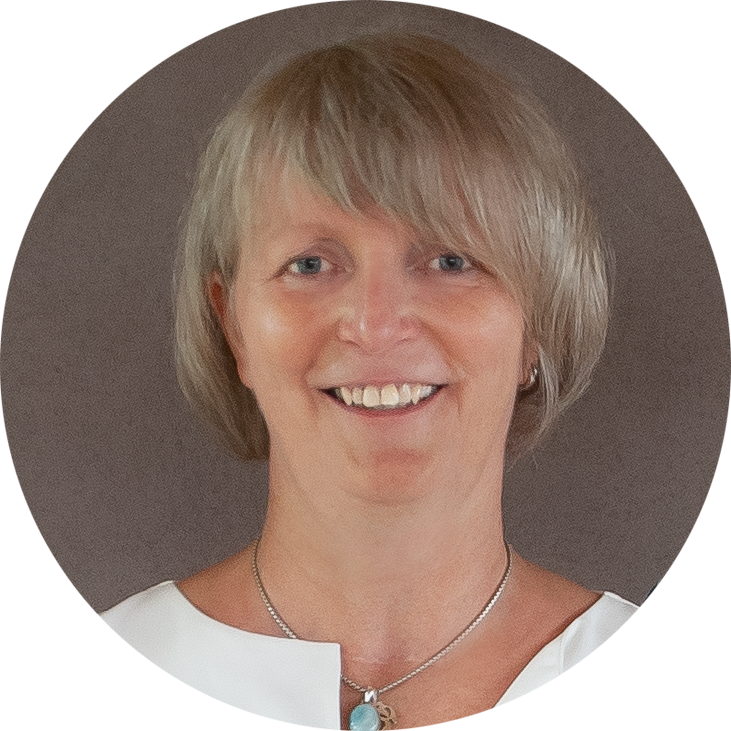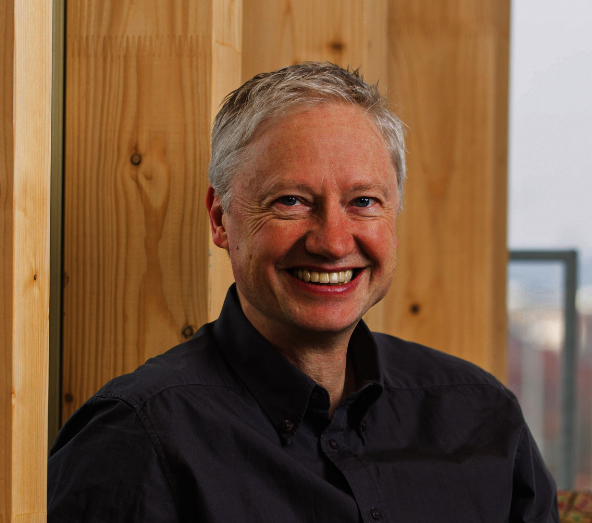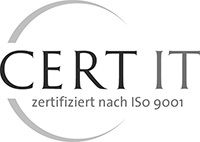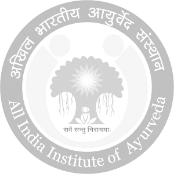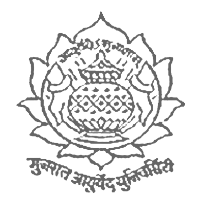Obstacles to implementation
Ayurveda deeply believes that people strive for what is good and right in their innermost volition. Behavior conducive to good health correlates with perceptions that are perceived as pleasant and beneficial. Those who set out on the path of a health-conscious lifestyle can be empowered by positive experiences that bring greater quality of life and harmony.
People who no longer have these perceptions, who perhaps even perceive the non-beneficial as pleasant and beneficial, are disturbed in their ability to perceive. They suffer from a disease that Ayurveda calls "prajnaparadha" - "misperception". This fundamental disturbance lies at the root of many diseases, as it prevents correct behaviour and promotes incorrect behaviour, thus turning initial disturbances of well-being into a somatically manifested disease.
With the introduction of prajnaparadha, Ayurveda lays special emphasis on the mental causes of diseases. We had already seen that wrong conduct has been defined as a disease-causing moment. But wrong behaviour is in turn based on wrong attitude and wrong perception.
Ayurveda can be combined very well with behavioural therapy oriented recommendations and the psychological processing of the history of the origin of the disease and supports these therapeutic approaches.
In order to be able to correctly implement all the described dimensions of Ayurveda, a qualified training is required. In the meantime, it is now also possible to study Ayurveda medicine in Germany, which corresponds in its curriculum to the studies carried out in India. More information: www.ayurveda-akademie.org/hochschulprogramm
An example of treatment
Woman, 45 years, commercial profession Initial consultation: April 2010
March 2010 Nervous breakdown. Last summer, there was a discomfort in the right side of her body, before that she was very stressed in the office, moved and did a lot of lifting. At that time she was burned out, thought it was apoplexy: hysteria! In January she had a severe flu, then she felt discomfort, very strong. She has been examined, everything is ok. Depression and burnout, which showed physically,
3 weeks at home: infusions for 2 weeks with Vit B and NaCl from HA, gymnastic exercises by herself, no TV, no radio, no reading, after 3 weeks took up work, now better, but hair loss, at left tonsil: sebaceous deposits and does not feel 100% strong! On exertion, r. side of body a slight tingling and panic attacks (palpitations and anxiety) hourly. Micturition increased, sometimes hourly, but not in progress (can't go to the bathroom).
Skin blemishes with dairy, increased on face At 33 thrombosis, left US, pill was taken before that. 5 days in hospital.
Cervical spine - syndrome, years ago rotary vertigo attacks, now better! Scoliosis in the chest area! Epicondlitis on the right.
Psychosocial anamnesis Partner: Partner for 15 years, very harmonious. Family: used to have partner's children to look after at weekends, now grown up. No children of her own, additional burden would be too great
Occupation: Commercial occupation, all appointment work. Many telephones in open-plan office, since 1 year, noise becomes a burden and sometimes stresses. Concentration problems in the beginning, now better, except for panic, which is very frequent.
Drinks: coffee: seldom, alcohol 0, formerly red wine, nicotine 5-8 since 25 years in the evening, to come to rest Ern/FS: formerly: bread with jam and butter, wholemeal muesli with milk Ern/ME: formerly canteen: now vegetarian (only side dishes) Ern/AB: little: lots of vegetables and noodles, meat little, tomatoes much! Ern/ZWI: no cheese! Little raw food, banana 10am Drinking: herbal tea and water 2L Exercise: walks on WE, spa: swimming, sauna, physiotherapy massages and heat! Mood: sees everything half empty. Turning movement: Aversion and often panic! Temperament: VATA (never say no and swallow everything) Hobbies: music, less lately and reading.
Physical history Menses: progestin stick used by gyn. No menses. for many years Stool: constipation tendency, nicotine aids digestion. Urine: around 30 recurrent urinary tract infections! Better with herbal cream. Thirst: normal Hunger: normal Taste: likes nuts, chocolate now and then. Seasons: Cold, wind and snow are not hers. Sun she likes. Lately cold hands and feet. Sleep: likes to sleep a lot, from 10pm - 6:30am. Could sleep until 8am, very tired in the morning as a result. Often also sleep through and many thoughts and 1-2 times panic, also in the night. Dreams: rather everyday processing with negative office stress. Early: big ball rolling towards her and rolling over her Physimm: rarely, sometimes she sweats at night. Psychimm: slightly unstable Allergy: pear, cherries, apple: bloating, dairy: Skin blemishes, worse with seafood! Expectations: More psychic strength, skin and hair better!
Examination RR/PU/RH: was rather normal NADLOFP: Vata and Pitta +: weak, warm, fast, regular NADLTP: PV NADROFP: Pitta and Vata +: stronger, warm, fast, regular NADRTP: PV NADITIER: Frog Tongue: Pitta, but very restless and tilted to the left, little coating (cave nicotine: Here you often don't see the coating) Ama: blood Eyes: very sensitive: wind and sun rays Nails: P Hair: loses more hair Teeth: P Skin: now blemishes on face, sometimes on back Tissues: P BEWAPP: VP Agni: vishamagni Impression: good.
Diagnosis Constitution: pitta, vata Disorder: vata and pitta increased Psychkpn: Rajas Doshapra: vata and pitta Dushya: rakta and rasa and manas Agni: raktagni Ama: blood Manasado: vata Sattva: good Bala: good
Treatment diet: anti pitta vata (arc explained and given along: should change it step by step without pressure ) and herbal tea ( lemon balm, orange blossom, hops etc) 1 liter a day.
Lifestyle: Walks and after a few weeks back to regular swimming and increase guitar.
Ambiphysi: No oil: due to Pitta
Phytotherapeutic support 1 Withania somnifera Kps. 290mg 3x1 1 Tinospora cordifolia Kps. 440mg 3x1 1 Bacopa monniera Kps. 480mg 3x1 1 Cyperus rotundus Kps. 150mg 3x1
August 2010 Follow-up consultation (after 4 months, as the patient comes from further away) Email feedback requested and received for the first time after 4 weeks: Everything is slowly getting better.
How is it going? Much better! Last Saturday, little finger bruised, UKH: X-ray ok, no feeling. Feels it mentally, anger and aggression is there, eyes marginally better. Restlessness is better and panic attacks are gone! Is more resilient at work! Mentally in the observer role, also seen some faults and weaknesses, no longer so oversensitive and funnier! Discomfort and hourly micturition increased, even in company she says she needs to go to the bathroom. She has gotten a larger range, doesn't panic! Exercise, swimming and guitar she has done well.
Dairy gone, skin better in spurts! Bad at first, joints were worse but is better now. Swimming and gymnastic exercises! Flatulence was bad. Stopped tea after 3 months, it was too much at the end! Cervical spine syndrome: better! PC was also changed! Questions: no cheese! Projection, less! Personal: husband sure spends more time with kids and totally forgets dates with her! Kids demand more! Aggressive! Pulse: PITTA and VATA + stronger, warm, fast, regular Tongue: P, Less restless, no coating
Phytotherapeutic support: Same recommendation as in the initial consultation
April 2011 Follow-up consultation How is it going? Not good at the moment. Handed in resignation yesterday. Company is terminating many employees, she has been burned out for 2 years. She would have to work more and more, it just doesn't work anymore! She's been with the company for 21 years. Mental: restlessness more and left side of face, like metal paralysis and also hands fall asleep again, open plan office gets even bigger. Going to toilet possible with code (you have to enter code to use toilet), time is getting too short, breaks not allowed, panic? Not there yet, dizziness is back. Sleep, going well.
Phytotherapeutic support: continuous intake, 1-2 weeks reduced, 1 time a day: mood was worse right away. Tight feeling in chest area, numbness coming on strong, hourly micturition, got worse again! Exercise: Home trainer in the evening. Cervical spine syndrome again. Skin is good, only in phases spots come, but are getting better. Flu infection in February, then nothing at all. Stool is also fine, flatulence is better. Pulse: P and Vata stronger, warm, fast, regular Tongue: p, less restless, no coating, edges tense! Private with life partner good, is understanding, was important.
Phyotherapeutic support 1 Withania somnifera Kps. 290mg 3x1 1 Tinospora cordifolia Kps. 440mg 3x1 1 Bacopa monniera Kps. 480mg 3x2 for 4 weeks 1 Nardostachys jatamansi Kps. 100mg 3x2 for 4 weeks Moreover Abhyanga now prescribed to it, every 2 weeks with Dhanvantharam Taila with a therapist near her. Also yoga exercise (stand) and finger yoga exercise (Shakti Mudra) recommended as daily ritual.
Additional sick leave - in other words: she needs rest and time for herself. Certificate about burnout for submission to various offices and authorities, so that she also admits to herself a time out.
October 2011 Follow-up meeting (mail in July: everything much better) How is it going? Much better! Zero C2, sick 1x. May and June were really bad, once also panic attack. No coffee at all for 5 months, doesn't taste any more either, calmer and content. Job: submitted medical certificate on Friday. When she left the company, nervous breakdown, also took a long time, calmer since September. Antidepressant prescribed by psychiatrist she has not needed. Goes out into nature a lot and can manage her time. Sick leave until September, looking for a job again, wants to work part-time.
AMS: no great pressure. Really recovering now, strength is getting better.
Sleep: 2-3 x a week she falls asleep late and soon perks up 5-6h. Skin is better. Stools daily, consistency softer.
Diet: avoids all dairy, not even goat's milk, citrus not going. Drinking enough, plenty of Rooibos tea, tap water, apple juice diluted.
Pulse: PV, warm. Tongue: light coating, skin: lower leg r.
Phytotherapeutic support 1/Withania somnifera Kps. 290mg 3x1 by December 2011 1/Tinospora cordifolia Kps. 440mg 3x1 till December 2011 1/Bacopa monniera Kps. 480mg 3x1 till December 2011 1/Nardostachys jatamansi Kps. 100mg 3x1 till December 2011
In addition, also Abhyanga every 2 weeks with a therapist near you.
Mail: Early January 2012: since 3 weeks without capsules: all good and new quieter job chosen wisely.
Literature: Caraka Samhita, ed. by P. V. Sharma, Varanasi 1981 ff.
M. Mittwede: Ayurveda - From the Origins to Medicine Today, Heidelberg 1997.
S. N. Gupta, E. Stapelfeldt: Practice Ayurveda Medicine, Stuttgart 2009
E. Wolz-Gottwald: Heilung aus der Ganzheit, Ayurveda als Philosophie in der Praxis, Gladenbach 1991.
www.ayurveda-akademie.org/fileadmin/user_upload/PDFs/Artikel/stress-macht-krank.pdf
www.ayurveda-akademie.org/fileadmin/user_upload/PDFs/Artikel/burnout-rosenberg.pdf
About the Authors:



